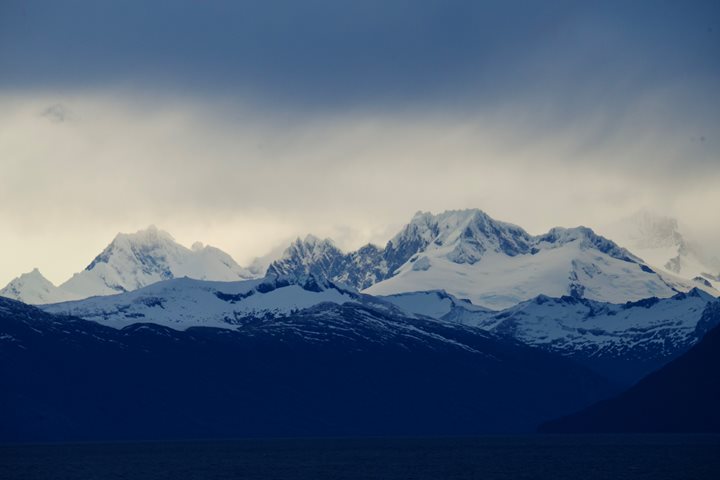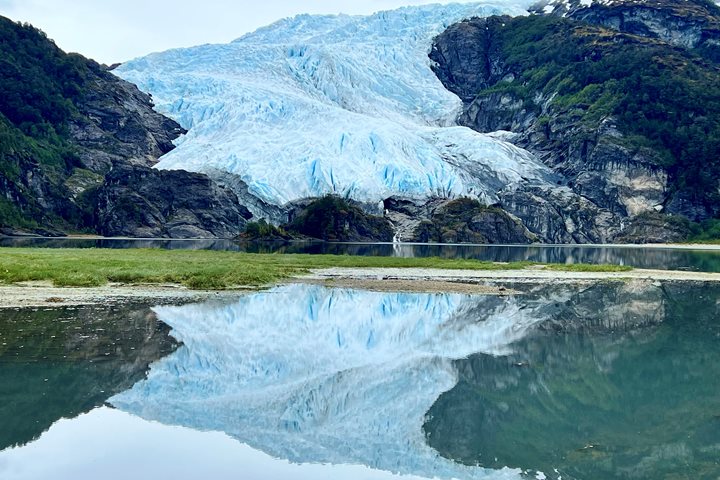This morning we found ourselves in Puerto Cook, a deep indentation on the north coast of Isla de
Ashore, the wind was weak, and the rain had stopped. There was a well-marked trail, and folks from the Argentine Park Service accompanied us to point the way. We marched through the tall, grass-like rush (sedges have edges, grasses have joints, and rushes do not). The rush appeared to be one of the favorite foods (snacks?) for the introduced goats and red deer.
After passing some flowering holly-leaf barberry with beautiful orange flowers and small evergreen southern
What I was really searching for, however, was a much smaller plant, one that is red and smaller than a dime—the carnivorous sundew. The sundew is often found with the soft camp. Bogs tend to have only small amounts of certain, important nutrients necessary for plants. There are several solutions to this problem: One solution is to be evergreen, like the soft camp, and hoard the nutrients you have. But the sundew supplements what it can get from the ground by being a hunter. The red leaves of the sundew have a number of glandular-tipped hairs that attract, ensnare, and digest unwitting, small insects. I found the sundew while crawling on my hands and knees, and I gleefully pointed it out to anyone nearby. A great morning!
In the afternoon, we visited an unmanned lighthouse known as Faro San Juan del Salvamento. The lighthouse was built in the latter part of the 19th century, and its fame came about from a Jules Verne novel, “The Lighthouse at the End of the World.” Since







